The Orishas, central figures in Yoruba mythology, are more than just deities. They represent a rich tapestry of African spirituality, each one holding unique significance and playing distinct roles.
Originating from historical contexts deeply rooted in African spiritual practices, the Orishas offer insights into the culture and beliefs of the people who revere them. This article presents an comprehensive list of these divine entities, delving into their origins, meanings, and roles within Yoruba mythology and beyond.
An understanding of this list is key to appreciating the depth and diversity inherent in African spirituality.
Understanding Yoruba Deity Names
Let’s break down how the Yoruba people name their deities. We’ll also find out why these names matter and what they reveal about each god’s role and power.
The Yoruba Deity Naming System
The Yoruba people have a unique way of naming their deities, known as Orishas. It’s not just about picking cool-sounding words, though. Each name has deep meaning and is carefully chosen to reflect the deity’s nature and abilities.
- For example, “Ogun” is the god of iron, war, and labor. His name translates to “one who pierces,” representing his warrior-like characteristics.
- Another important Orisha is “Yemoja,” the goddess of the ocean and motherhood. Her name means “mother whose children are like fish,” symbolizing her nurturing qualities and connection with life-giving waters.
These names aren’t just labels; they’re insights into what each deity stands for in the Yoruba belief system.
Significance of Deity Names
In Yoruba culture, names carry weighty significance. They’re more than just identifiers; they convey a person or deity’s character, destiny, or even a prophetic declaration about their life.
- Take “Shango,” for instance. He’s named after one of the greatest kings of the Empire in Nigeria. As an Orisha, Shango represents leadership, justice, and thunderstorms – all attributes associated with powerful rulers.
- Similarly, “Oya,” another prominent Orisha known for windstorms and transformational change bears a name that signifies “she tore.” This reflects her fierce nature and ability to bring about drastic changes.
By understanding these meanings behind each name you gain deeper insight into Yoruba spirituality.
Deity Names Reflecting Roles & Powers
The names given to Orishas are no random picks. They are carefully chosen to mirror the roles and powers of these deities.
- “Obatala,” for example, is the Orisha of purity, ethics, and humility. His name means “king of white cloth,” a symbol of purity in Yoruba culture.
- “Eshu,” on the other hand, is known as the trickster god and messenger between humans and Orishas. His name translates to “sphere” or “circle,” signifying his role as a communicator who connects all things.
These names serve as an embodiment of each deity’s unique attributes and responsibilities within the pantheon of Yoruba gods.
Unveiling Female Orishas
Let’s delve into the divine world of Yoruba mythology by introducing powerful female Orishas.
Meet the Notable Female Deities
-
Oyá
- Description: Goddess of the wind, storms, and the cemetery gates.
- Physical Description: Warrior-like appearance, often depicted with a sword and a nine-colored skirt.
- Power: Controls winds, storms, and the transition to the afterlife.
- Relations: Associated with Shangó and considered a fierce warrior.
- Different Names: Iansã (Candomblé), Oya (Santería).
-
Ewá
- Description: Goddess of the river, purity, and virginity.
- Physical Description: Depicted as a beautiful, chaste maiden.
- Power: Embodies purity, chastity, and secrets.
- Relations: Often associated with Obatalá and Oyá.
- Different Names: Yewá (Santería), Iewa (Candomblé).
-
Oshún
- Description: Goddess of love, beauty, and fertility.
- Physical Description: Often depicted as a beautiful, seductive woman adorned with gold.
- Power: Governs over rivers, love, fertility, and gold.
- Relations: Has a special connection with Changó.
- Different Names: Oxum (Candomblé), Ochun (Santería).
-
Naná Burukú
- Description: Ancient deity of swamps, rain, and the earth.
- Physical Description: Elderly woman, often associated with mud, swamps, and rain.
- Power: Represents the primal waters and earth.
- Relations: Mother of Babalú-Ayé and sometimes linked with Yemayá.
- Different Names: Nanã (Candomblé), Nana Buruku (Santería).
-
Obá
- Description: Warrior goddess and the deity of marriage and rivers.
- Physical Description: Warrior-like figure, sometimes depicted with a sword.
- Power: Governs over marriage, fidelity, and rivers.
- Relations: Associated with Shangó and Oyá.
- Different Names: Obá (in most traditions).
-
Yemayá
- Description: Goddess of the sea and motherhood.
- Physical Description: Often depicted as a mermaid or a motherly figure.
- Power: Controls the oceans and embodies motherly love.
- Relations: Mother of many Orishas, including Shangó.
- Different Names: Yemanjá (Candomblé), Yemoja (Santería).
-
Ibú Kolé
- Description: Goddess associated with vultures and cleanliness.
- Physical Description: Often linked with the imagery of vultures and purity.
- Power: Symbolizes cleanliness, transformation, and vultures.
- Relations: Associated with Yemayá and Oshún.
- Different Names: Ibú Kolé (Santería), Cólera (Candomblé).
-
Ayao
- Description: Orisha of air, the hunt, and divination.
- Physical Description: Depicted as a young huntress with bird features.
- Power: Mastery over air, birds, and divination practices.
- Relations: Sometimes considered a companion or relation to Oyá.
- Different Names: Ayao (Santería), Iaô (Candomblé).
-
Oduduwa
- Description: Primordial goddess of the earth and creation.
- Physical Description: Often depicted as a wise, motherly figure.
- Power: Associated with the earth and the creation of humanity.
- Relations: Linked with Obatalá, considered a creator deity.
- Different Names: Odudua (Candomblé), Oduduwa (Santería).
-
Yemú
- Description: Deity of mud, marshes, and the earth.
- Physical Description: Often depicted as a maternal figure, associated with the earth.
- Power: Represents the nurturing aspect of the earth and mud.
- Relations: Linked with Yemayá, as an aspect of motherhood.
- Different Names: Yemu (Santería), Yemowó (Candomblé).
Characteristics Linked to Female Deities
Each female deity possesses distinct traits that set them apart from others.
Oshun is represented by rivers while Yemaya is associated with the sea. Oya governs winds and storms – elements that signify change.
These manifestations reflect each deity’s influence on human lives. For instance, Oshun brings prosperity; Yemaya ensures safety during travel; Oya facilitates personal transformation.
Influence of Female Orishas in The Pantheon
Female Orishas hold immense power within the pantheon due to their responsibilities towards creation and human beings’ wellbeing.
Oshun is revered as a creator goddess who breathed life into humans. As a mother figure in many tales, she represents care and compassion – qualities often linked with feminity.
Yemaya also plays a crucial role in creation mythology as she birthed many other deities besides humans. Her nurturing nature resonates deeply with her followers who seek her guidance for familial matters or fertility issues.
Similarly powerful is Oya who commands respect through her control over life-changing forces like wind and lightning. Her influence extends to our personal growth, urging us to embrace change for betterment.
Female Orishas in Human Life
Just as they impact the pantheon, female Orishas also have a profound effect on human lives.
Oshun, as a goddess of love and fertility, is often invoked by those seeking harmony in their relationships or hoping to start a family. She’s seen as an ode to femininity and grace.
Yemaya’s protective nature makes her a popular figure among travelers who pray for safe journeys. As the ‘mother of all,’ she’s also sought after by those yearning for motherhood or dealing with familial problems.
Oya is revered by individuals undergoing major life transitions.
Exploring Male Orishas
The Yoruba mythology is rich with diverse deities, each playing unique roles. Let’s dive into the world of male Orishas, their attributes and roles they play.
Male Orishas
-
Eleguá
- Description: Guardian of crossroads, doors, and paths. A trickster and messenger.
- Physical Description: Often depicted as a small boy or an old man with a hat, holding a staff.
- Power: Controls destiny and fortune; opens or closes the path to mankind.
- Relations: Interacts with all Orishas as he opens and closes the way.
- Different Names: Eleggua (Santería), Elegbara (Candomblé), Legba (Vodou).
-
Ogún
- Description: God of iron, war, and labor.
- Physical Description: Warrior-like, often depicted with iron tools or weapons.
- Power: Mastery over iron, war, and labor-related activities.
- Relations: Brother of Eleguá and Ochosi, forming a trio.
- Different Names: Ogum (Candomblé), Ogun (Vodou).
-
Oxóssi
- Description: The divine hunter and the embodiment of justice.
- Physical Description: Depicted as a fierce, agile hunter with a bow and arrow.
- Power: Patron of justice, hunting, and those who seek fairness.
- Relations: Close to Ogún and Eleguá.
- Different Names: Oxóssi (Candomblé), Ochosi (Santería).
-
Shangó
- Description: God of thunder, lightning, and fire.
- Physical Description: Kingly and powerful, often depicted with a double-headed axe.
- Power: Controls thunder, lightning, fire, and drums.
- Relations: Has connections with Oyá and Oba.
- Different Names: Xangô (Candomblé), Sango (Vodou).
-
Orunmila
- Description: Deity of wisdom and divination.
- Physical Description: Sage-like appearance, often depicted with divination tools.
- Power: Possesses knowledge of the future and human destiny.
- Relations: Works closely with Eleguá, the opener of ways.
- Different Names: Orunmilá (Candomblé), Orunmila (Santería).
-
Obatalá
- Description: Father of all Orishas and humans; god of peace and purity.
- Physical Description: Elderly, wise figure, often depicted in white clothing.
- Power: Represents peace, wisdom, and purity.
- Relations: Seen as the father figure to many Orishas.
- Different Names: Oxalá (Candomblé), Obatala (Vodou).
-
Aganyú
- Description: Deity associated with volcanoes, the wilderness, and the desert.
- Physical Description: Strong, powerful figure, often linked with the earth.
- Power: Represents the primal energies of the earth and volcanoes.
- Relations: Father of Shangó; linked with Obatalá.
- Different Names: Aganjú (Candomblé), Aganyu (Santería).
-
Olokun
- Description: Ruler of the deepest parts of the ocean.
- Physical Description: Often depicted as a merman or a mysterious sea entity.
- Power: Controls the ocean’s depths and mysteries.
- Relations: Related to Obatalá, as an aspect of depth and serenity.
- Different Names: Olokun (in most traditions).
-
Babalú-Ayé
- Description: Deity of illness, healing, and the earth.
- Physical Description: Often depicted as an old man covered in sores or rags.
- Power: Governs over disease and healing.
- Relations: Associated with Naná Burukú and Orunmila.
- Different Names: Omolu (Candomblé), Babalu-Aye (Santería).
-
Orisha Oko
- Description: Deity of agriculture and the harvest.
- Physical Description: Often depicted as a farmer with tools.
- Power: Oversees agriculture, fertility of the land, and the harvest.
- Relations: Linked with earth and fertility deities.
- Different Names: Orisha Oko (in most traditions).
Yoruba òrìṣà Worship Practices and Variations
The worship of the òrìṣàs, a central part of the Yoruba religion, involves a variety of practices. These practices differ across regions in Africa and among diaspora communities.
Common Practices Involved in Worshiping Òrìṣàs
Worshiping òrìṣàs is not just about prayers. It’s an entire lifestyle that respects the traditions and teachings of the orishas.
Devotees often start their day by paying tributes to their ancestral spirits (ikú). This is done through prayers, songs, and sometimes dances.
Offerings play a significant role in these daily rituals. They can range from food items like okó (corn) to drinks like otìn (palm wine).
These offerings are believed to appease the orishas and bring blessings upon the devotee.
The Powers and Roles of Orishas
Unique Powers of Different Orishas
Orishas, the deities in Yoruba religion, each possess unique powers. They are not just spiritual beings; they embody aspects of the natural world and human existence.
- For instance, Shangó, one of the powerful orishas, represents thunder and lightning. His power symbolizes justice and retribution.
- Oshosi is another deity who personifies hunting and guidance. He provides people with resources and energy to navigate life’s challenges.
These powers aren’t just for show; they play a significant role within their spiritual realm.
Their Roles Within The Spiritual Realm
The roles of these many orishas are deeply intertwined with their powers. Remember Shangó? His power over thunder and lightning makes him a divine judge in the spiritual realm.
- Similarly, Oshosi’s hunting abilities make him a pathfinder for people seeking direction.
But it doesn’t stop there! These roles also influence believers’ lives significantly.
Impact on Believers Lives
The roles that orishas play have profound effects on believers’ lives. Each deity offers protection in different areas based on their domain.
- Shangó can provide justice when wronged, while Oshosi may guide someone lost towards the right path.
Moreover, believers seek guidance from these deities to achieve success in various aspects of life.
Duality Aspect Of Orishas
Interestingly enough, orishas also represent duality – an essential concept in Yoruba philosophy. They embody both beneficial and challenging aspects of life.
- For example, while Shangó brings justice, he might also bring destructive storms.
This duality serves as a reminder that life comprises both blessings and trials – each necessary for growth.
Orishas and Their Ruling Days
Understanding Ruling Days in Yoruba Mythology
In the world of Yoruba mythology, each day has a ruling god or “Orisha”. These divine beings have their specific days when their powers are at peak.
Let’s get into what these ruling days mean.
The concept of ruling days is pretty simple. It’s like how we have birthdays – special days dedicated to us. But for Orishas, it’s a bit different. Each day of the week is ruled by a particular Orisha.
This concept influences how people worship and interact with these gods. On an Orisha’s ruling day, they’re believed to be more present and active in human lives.
Breakdown of Orishas for Each Day
Now that we understand what ruling days are, let’s talk about which Orisha rules which day.
- Monday: This day belongs to Eshu-Elegbara, the god of roads and affairs. He opens up paths and brings opportunities.
- Tuesday: Oggun rules this day, the god of war and iron who clears obstacles.
- Wednesday: Mid-week is for Oya-Iyansan – the goddess of wind, lightning, and change.
- Thursday: Obatala takes over on this day. Known as the king of all Orishas, he represents justice and wisdom.
- Friday: The end of weekdays belongs to Oshun – the goddess associated with rivers, love, and prosperity.
- Saturday: Yemoja rules Saturday – she governs over motherhood and all things related to home.
- Sunday: Finally, Sunday is ruled by Olorun – representing life itself in its fullness.
So you see? Each weekday has its own energy vibe thanks to these divine rulers!
Concept of Supreme African God in Yoruba Mythology
Meet Olodumare, the Supreme God
In Yoruba mythology, there’s a supreme god named Olodumare. This deity is considered the highest authority.
Olodumare isn’t just any god. He’s divine and all-powerful.
Unlike other gods, Olodumare doesn’t have a specific ruling day. Instead, he rules every day!
The Bond between Olodumare and Orishas
The relationship between Olodumare and the orishas is unique. It’s kind of like a boss-employee connection.
Olodumare sends the orishas to earth to carry out tasks. In return, they report back to him.
It’s essential to remember that while orishas are powerful, they’re not on par with Olodumare. He reigns supreme.
For instance, Ogun is an orisha known for his strength and power. However, even Ogun bows down to Olodumare.
Significance of Olodumare in Yoruba Cosmology
In Yoruba cosmology, Olodumare holds an important role. He controls everything from above and ensures everything runs smoothly on earth through the orishas.
Without him, chaos would ensue as there would be no one to guide the orishas.
Conclusion
The rich tapestry of Yoruba deities, or Orishas, has played a pivotal role in shaping African culture. From the main god to male and female Orishas, each deity carries distinct powers and roles that permeate daily life and spiritual practices.
Their influence goes beyond mere worship; they serve as guiding forces for individuals chosen by them and dictate certain aspects of life based on their ruling days. The concept of a supreme African god further underscores the depth and diversity of Yoruba mythology.
Understanding this intricate spiritual system not only offers insight into African tradition but also enriches one’s knowledge about global religious practices. It is hoped that this exploration sparks a deeper interest in Yoruba mythology and encourages further research into other cultures’ beliefs. Delve into more fascinating topics like this by exploring our other articles or joining our community discussions to share your thoughts and learn from others’ perspectives.
FAQs
What is the complete list of Orishas?
This comprehensive list of Orishas includes a vast number of deities, each with their unique characteristics and domains. Some of the most well-known ones include Obatala, Elegua, Ogun, Yemaya, Oshun, Shango, Oya, Babalu-Aye and many more.
Who are the most important Orishas?
While all Orishas hold significance in Yoruba religion and its diasporic offshoots like Santeria or Candomble, some are commonly recognized as central figures. These include Obatala (the sky father), Elegua (the trickster), Ogun (god of iron and war), Yemaya (mother goddess of the sea), and Shango (god of thunder).
Know your Orisha?
Would you like to know your Orisha? The Odu that gave birth to you?
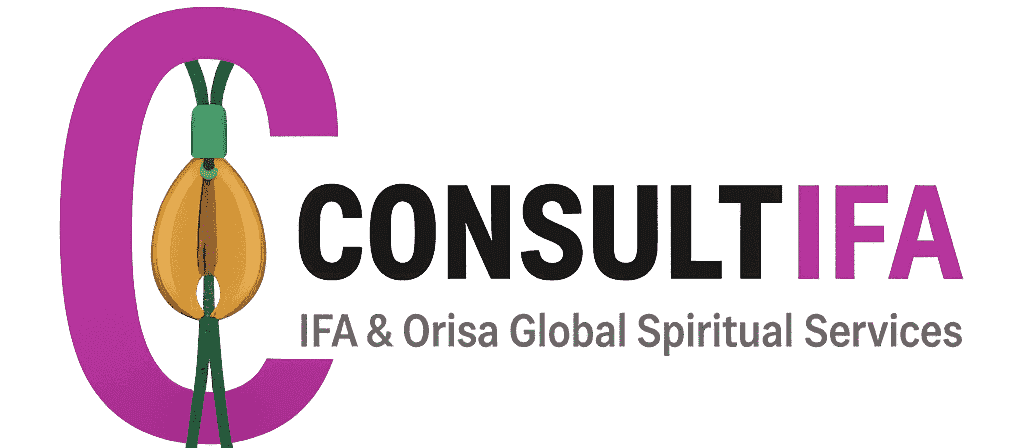
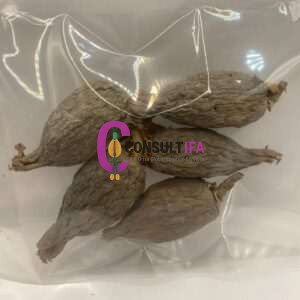

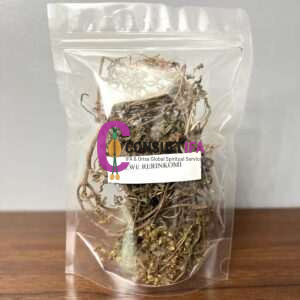
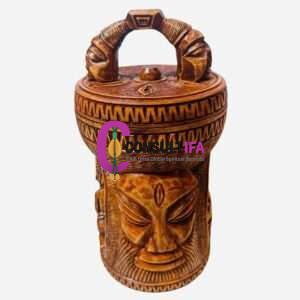
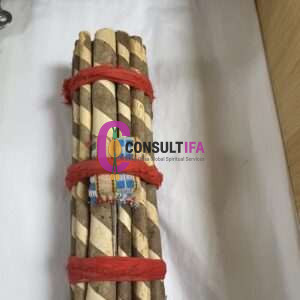
Thank you for resheasing in great details about the Yoruba Orishas . I am new to Ifa and have found your writing / essay to be so uplifing and very well researched and well written . Thank you .
You are welcome, we glad you found it helpful.
Explore our blog for more useful spiritual content or consider reaching out for help and guidance
The ancestors bless you.
Ase 🙏